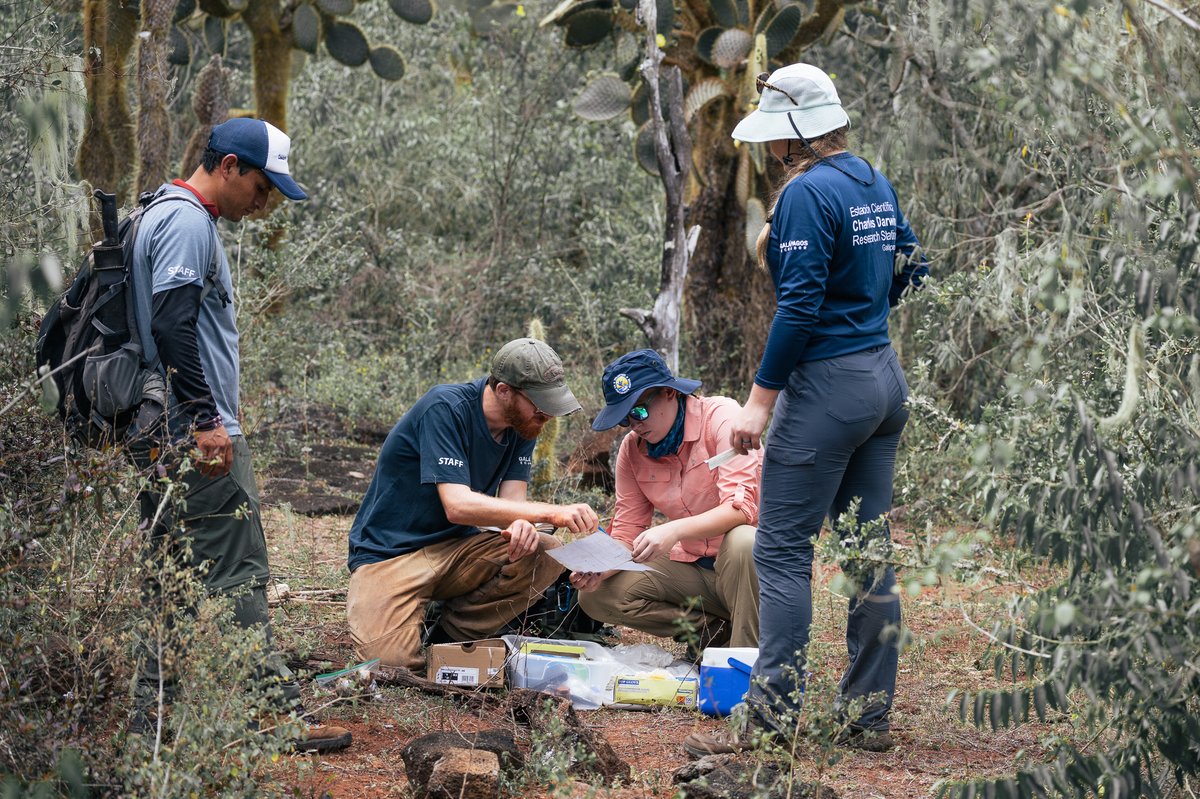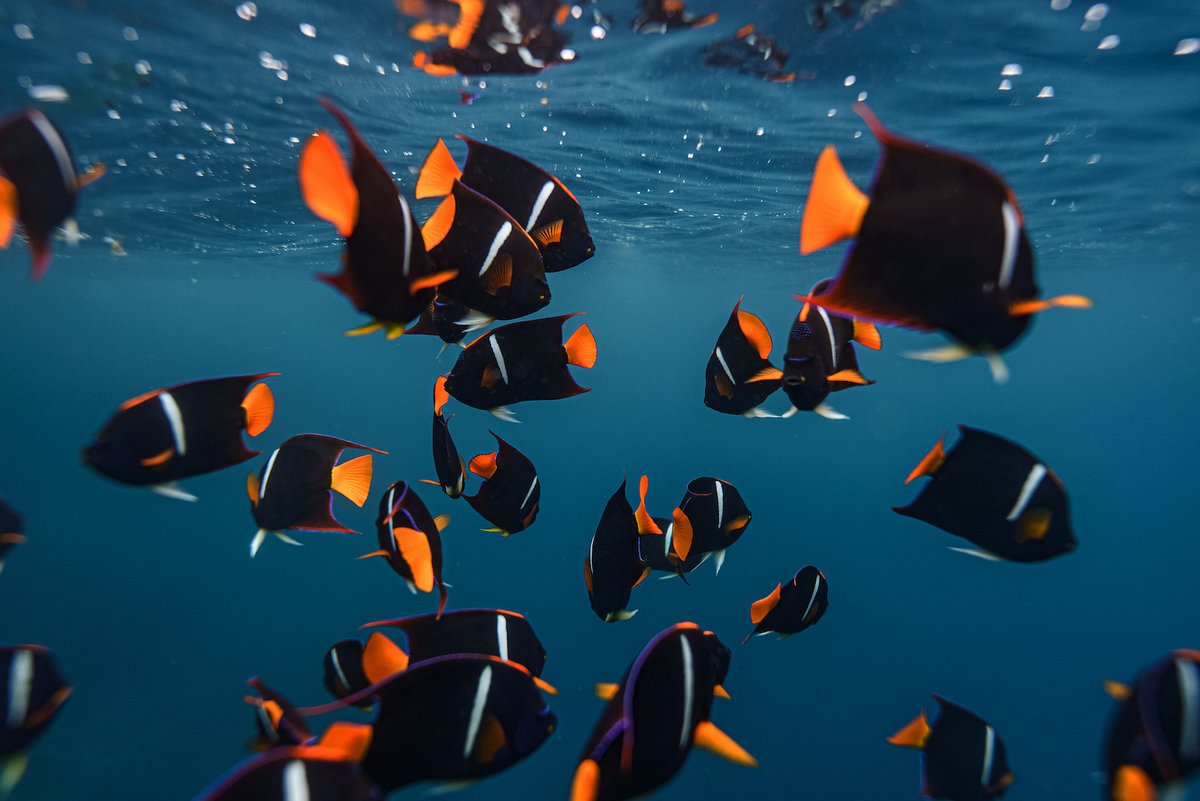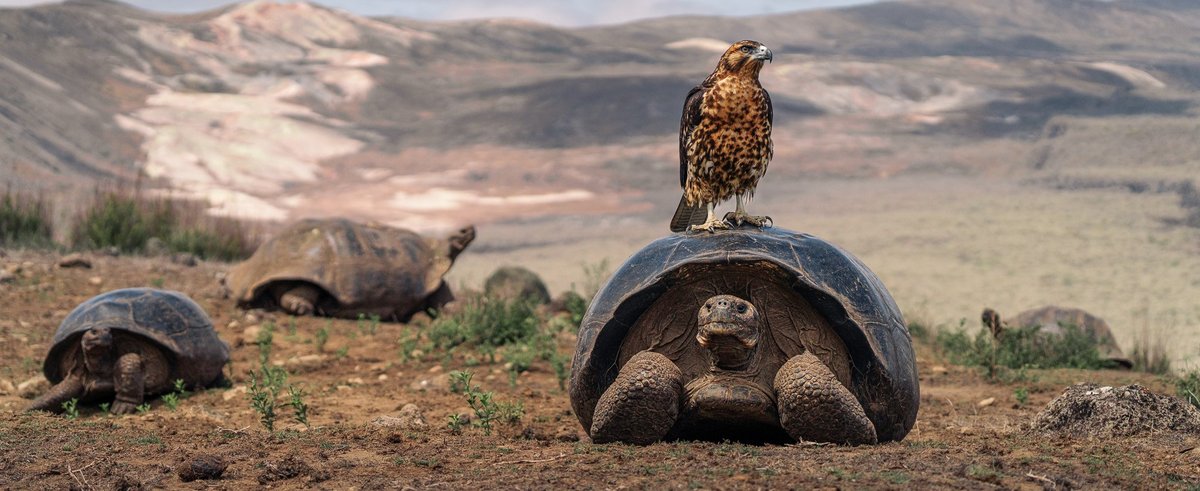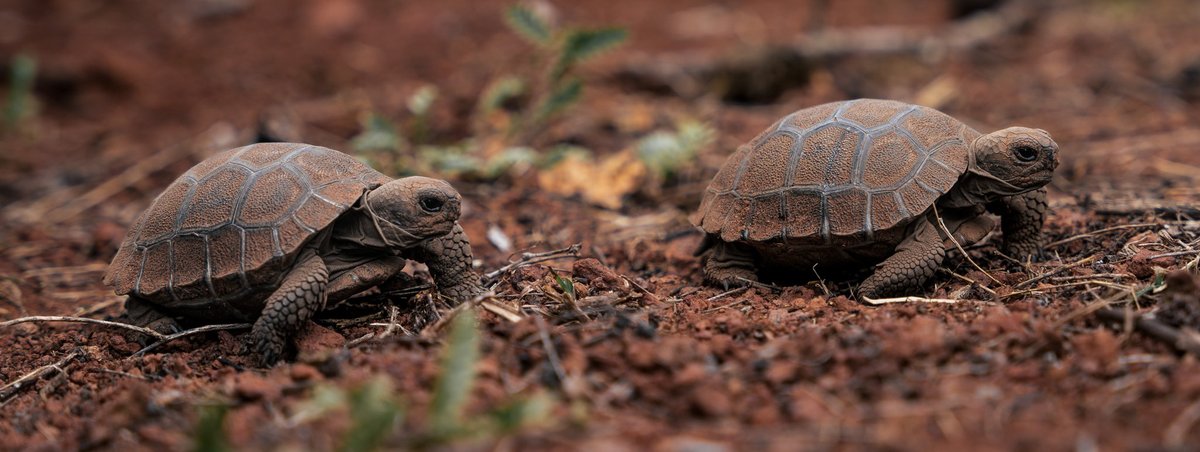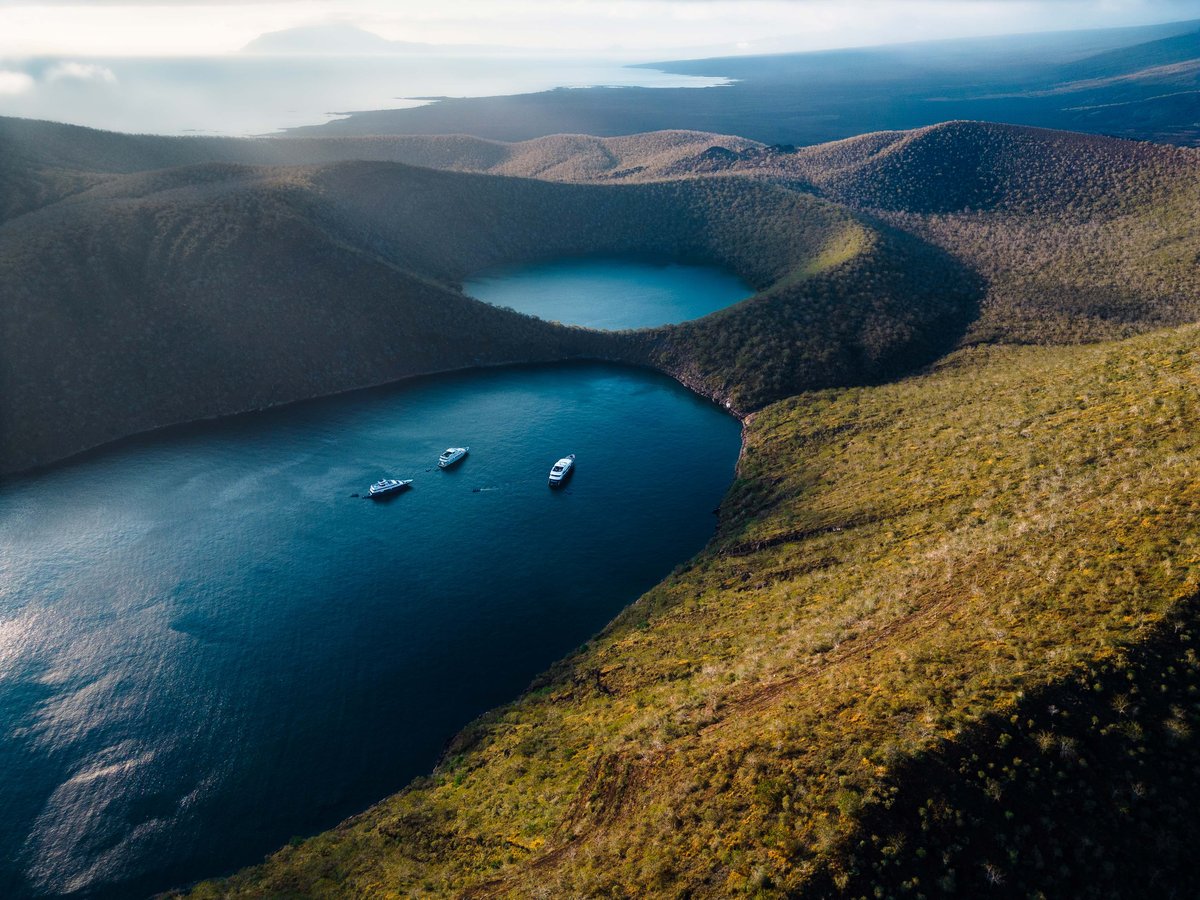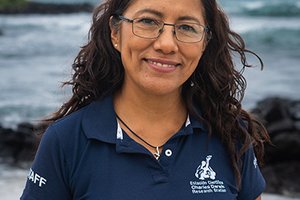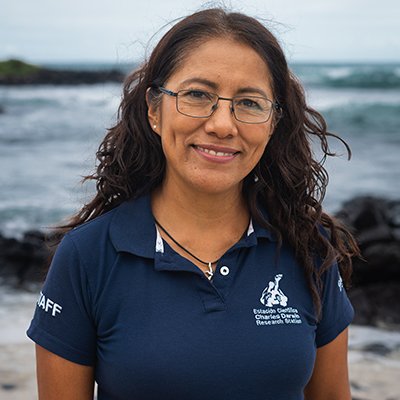The Cactus Has Returned… and with It, Hope on Plaza Sur
For the first time in nearly 70 years, natural regeneration of Opuntia echios var. echios has been recorded on Plaza Sur Island. This significant observation was made by the Galápagos Verde 2050 (GV2050) research team from the Charles Darwin Foundation (CDF), in collaboration with park rangers from the Galápagos National Park Directorate (GNPD). The last known instance dates back to a 1957 expedition by the University of California, Berkeley, which included renowned researcher Frank Sulloway. This new finding highlights the positive impact of ecological restoration strategies implemented over the past decade and represents an encouraging step forward in the conservation of this iconic species.
Multiple studies have documented a 60% decline in the Opuntia echios var. echios population on Plaza Sur since 1957, with an annual mortality rate of 1.3% and virtually no natural regeneration over the past 65 years (Snell et al., 1994; Sulloway et al., 2014; Sulloway & Noonan, 2015). Through the analysis of more than 600 historical photographs—some dating back to 1957—and early monitoring efforts by the GV2050 program, researchers identified and tracked over 334 adult cacti and a small number of juveniles, but found no evidence of new seedlings (Jaramillo et al., 2017; Sulloway et al., 2014; Sulloway & Noonan, 2015).
The main driver of this decline has been the high density of land iguanas, whose constant consumption of seedlings has prevented new cacti from establishing. This situation was further exacerbated by the disappearance of the Galapagos hawk, a natural predator that once helped control iguana populations. Without intervention, the population of Opuntia echios var. echios would likely have continued to decline—threatening not only the species itself but also the many others that depend on it.
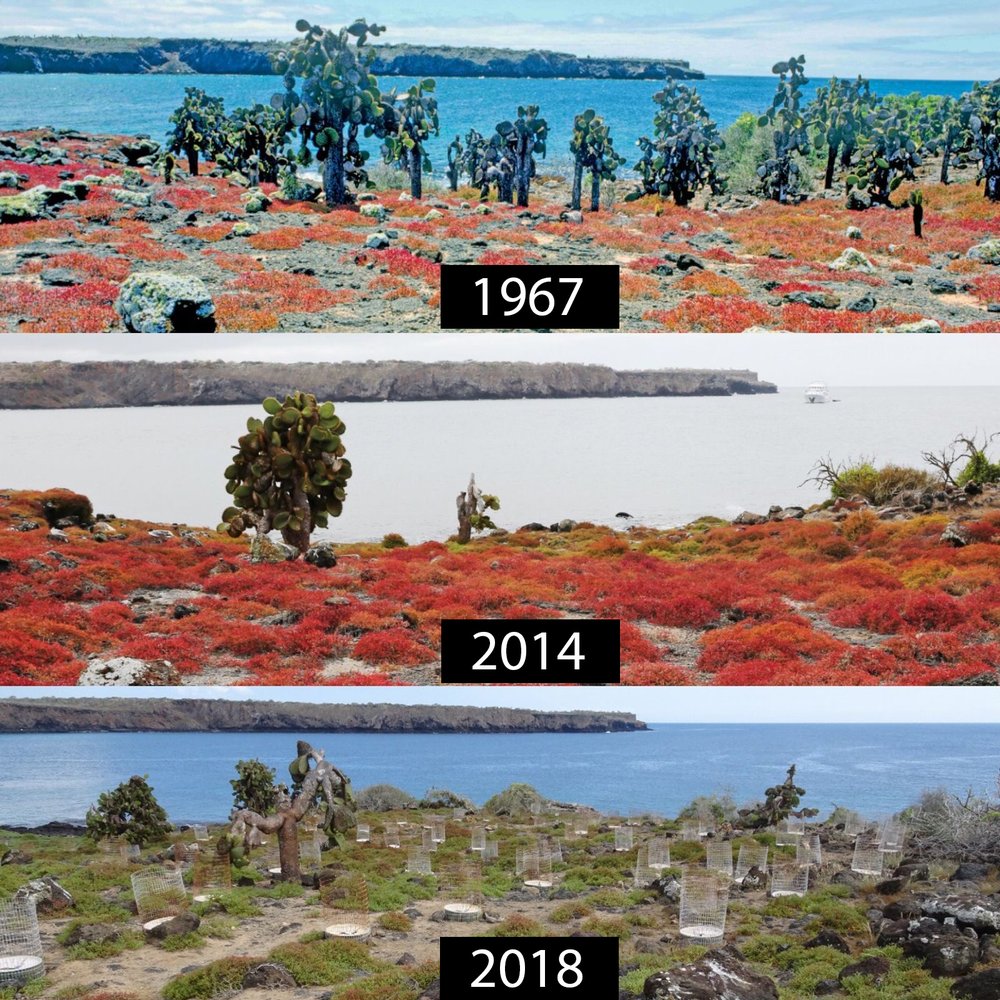
However, during this latest expedition, we recorded 68 new seedlings naturally growing in the three GV2050 study sites. This promising finding offers the first clear evidence that natural regeneration of this species is finally beginning to take place again.
In February of this year, during our expedition to Plaza Sur Island, we made a surprising discovery. As we approached one of the protective mesh structures where we had planted Opuntia echios var. echios, we found small seedlings growing naturally. These seedlings were not planted by us but had germinated spontaneously from seeds in the area. This phenomenon was made possible by the combination of ecological restoration technologies and the protection provided by the mesh, which prevented herbivores from consuming the seedlings before they had a chance to grow strong. Without these interventions, this natural regeneration process likely would not have occurred.
For those unfamiliar with the history of this species on Plaza Sur, this finding might seem like just another cactus. But for us, it represents nature’s living response after more than a decade of consistent restoration work.
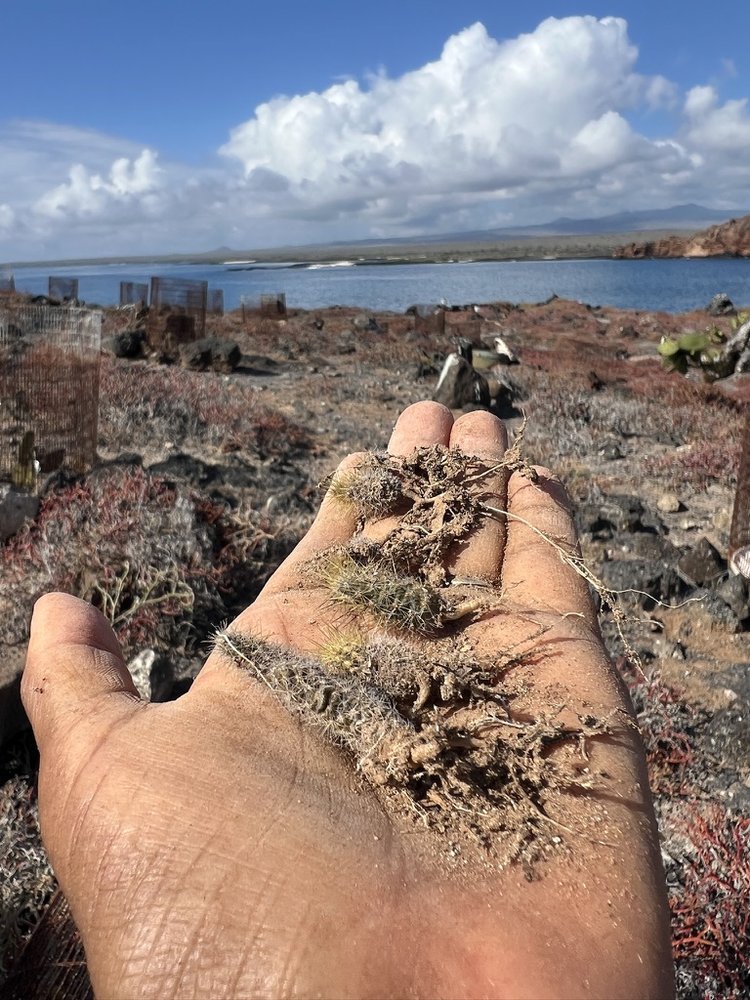
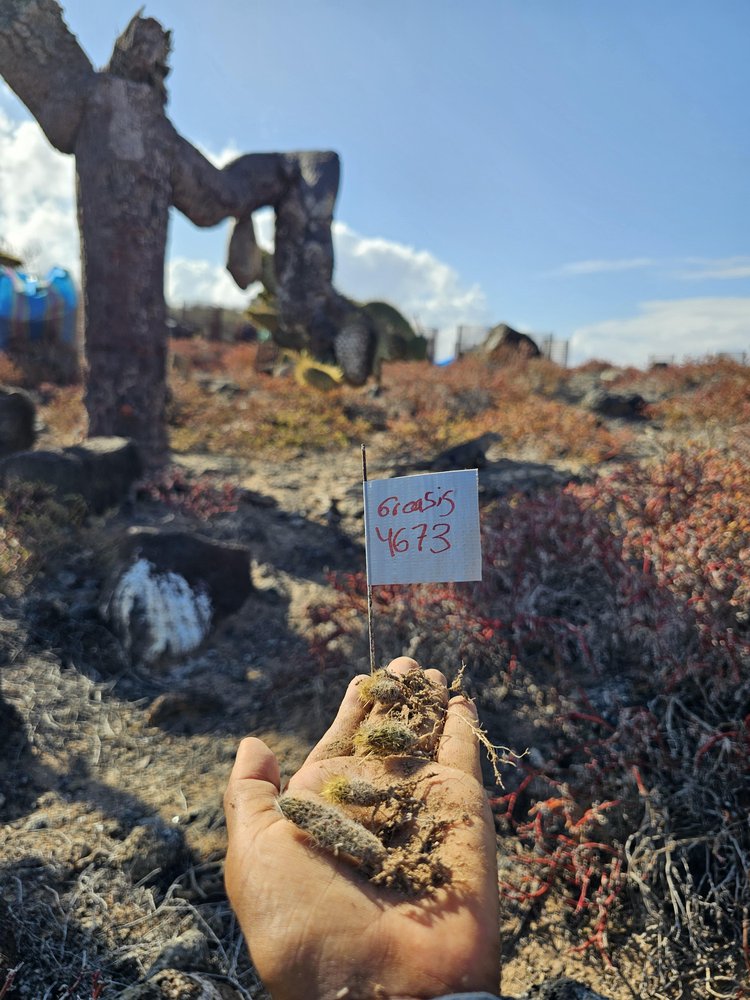
The Challenge of Restoring a Fragile Island
Plaza Sur is a small, 13-hectare island near Santa Cruz that supports a unique ecosystem. It is home to a high density of land iguanas and a remarkable concentration of endemic species in a compact area. These species are closely interconnected—for example, the strong ecological relationship between the Opuntia echios var. echios cactus and the land iguana (Conolophus subcristatus). This relationship makes the island an exceptional natural laboratory, but also extremely fragile.
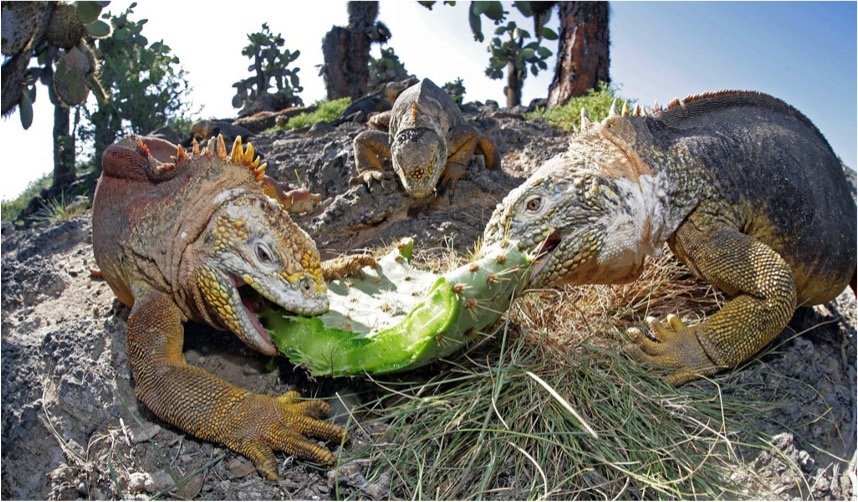
Since 2014, the Galápagos Verde 2050 program of the Charles Darwin Foundation has carried out ecological restoration actions on Plaza Sur, planting more than 1,300 Opuntia echios var. echios cacti. Of these, 853 today thrive thanks to restoration technologies such as hydrogel, biochar, and Waterboxx. These interventions, along with protective mesh to shield seedlings from land iguanas, have made a significant impact. In 2014, before the project began, 334 adult and juvenile cacti were recorded.
Today, Plaza Sur has at least 1,187 living cacti, combining both the planted individuals that survived and those that were originally present on the island.
This is more than triple the initially recorded population, showing that conservation actions backed by applied scientific research can restore the ecological functionality of fragile ecosystems degraded over decades.

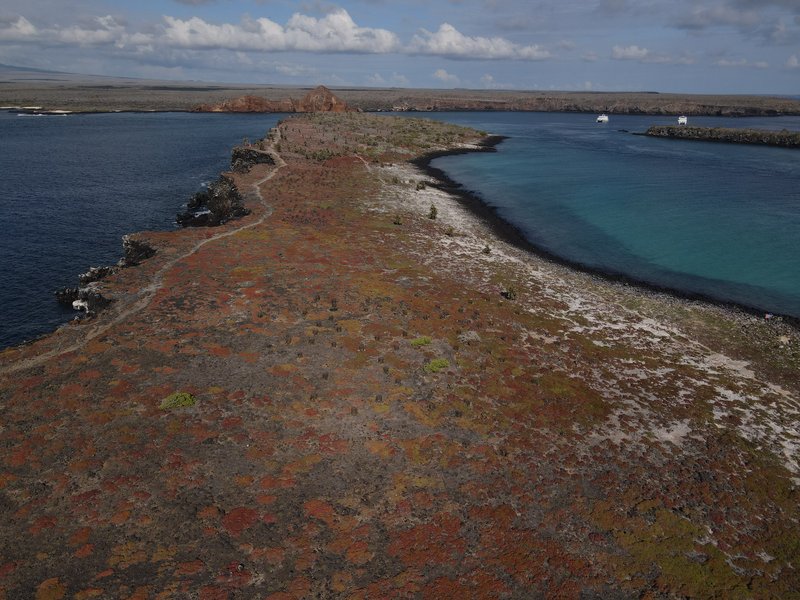
Applied Science That Bears Fruit
For over a decade, the work of the GV2050 program at CDF has focused on the reproduction and transplantation of Opuntia echios var. echios seedlings on Plaza Sur, selecting sites based on historical records. One of the program’s most notable successes has been increasing the species’ natural growth rate by a factor of six, using ecological restoration technologies designed to optimize water use. While wild cacti typically grow about 2 cm per year (Hicks & Mauchamp, 2000), the planted individuals on Plaza Sur have reached up to 2 cm per month—exceeding 25 cm annually.
This accelerated growth marks a major turning point for Opuntia echios on Plaza Sur. In the wild, it takes more than a decade for a cactus to reach just 20 cm in height.
But thanks to the restoration technologies used by the GV2050 program, some individuals have grown as tall as 113 cm in just a decade.
This sixfold increase in growth speed allows the plants to pass the critical height of 30 cm, making them less vulnerable to herbivores like land iguanas. At this stage, cacti develop stronger spines and tougher structures, which greatly improves their chances of survival. More importantly, faster growth means earlier maturity. The cacti are able to flower and produce fruit much sooner, accelerating the arrival of new generations. After more than ten years of dedicated work, the program has not only helped rescue a species at risk—it has also set in motion the conditions for the ecosystem to begin regenerating on its own.
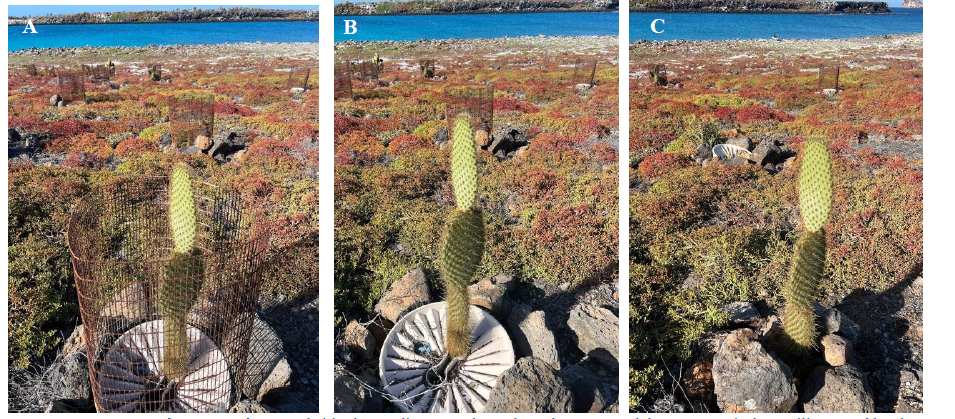
Natural Regeneration Begins
Currently, in the three study sites on Plaza Sur Island, we’ve recorded naturally regenerating Opuntia seedlings growing entirely on their own—without water-saving technologies and mesh protection. These tiny sprouts are taking advantage of the moisture and shade provided by surrounding vegetation. Their presence is a clear sign that ecological restoration is working on Plaza Sur, and they offer a message of hope for all of us who believe that recovering degraded species and ecosystems is still possible.
The Power of Working Together
None of this would be possible without the collaboration of research teams, park rangers, volunteers, institutions, naturalist guides, and visitors who value and protect this unique ecosystem. We will continue to work with the same commitment, because we know that every cactus counts—and every step we take brings us closer to a greener future for Galapagos.
Life is finding its way once again on Plaza Sur. And those small cacti sprouting among the rocks is a powerful reminder of that.
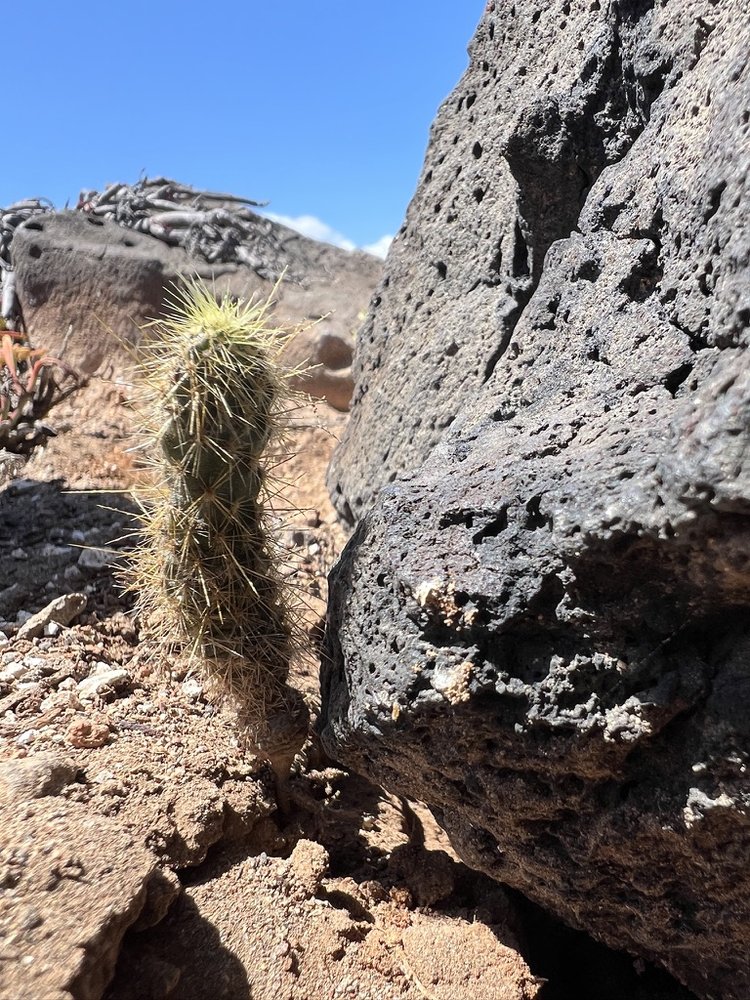
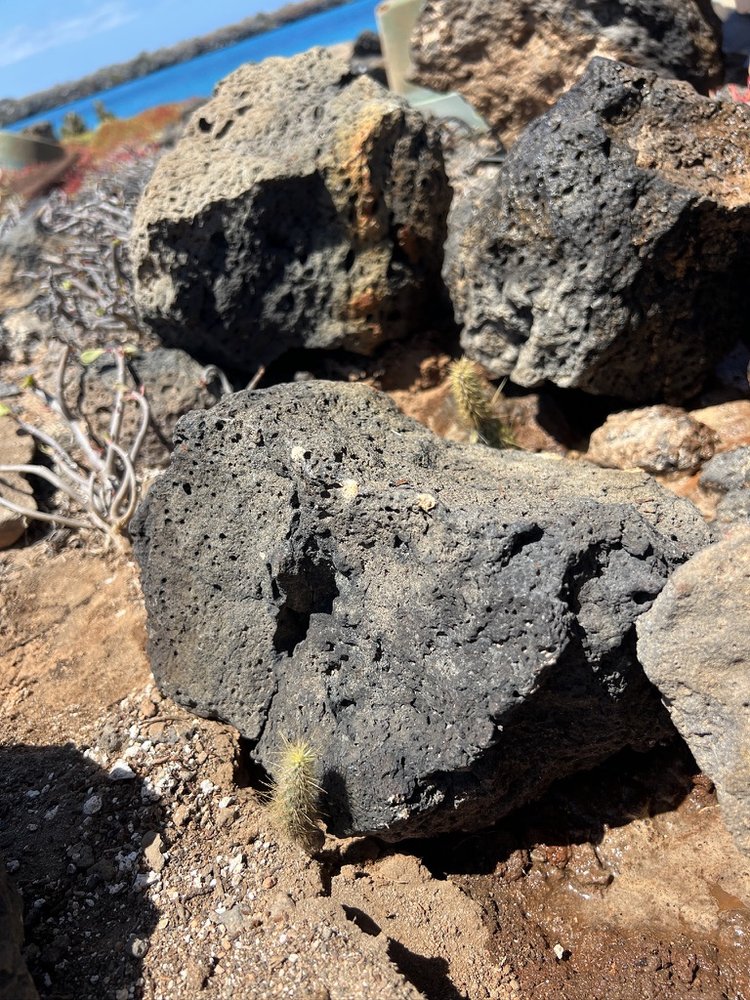
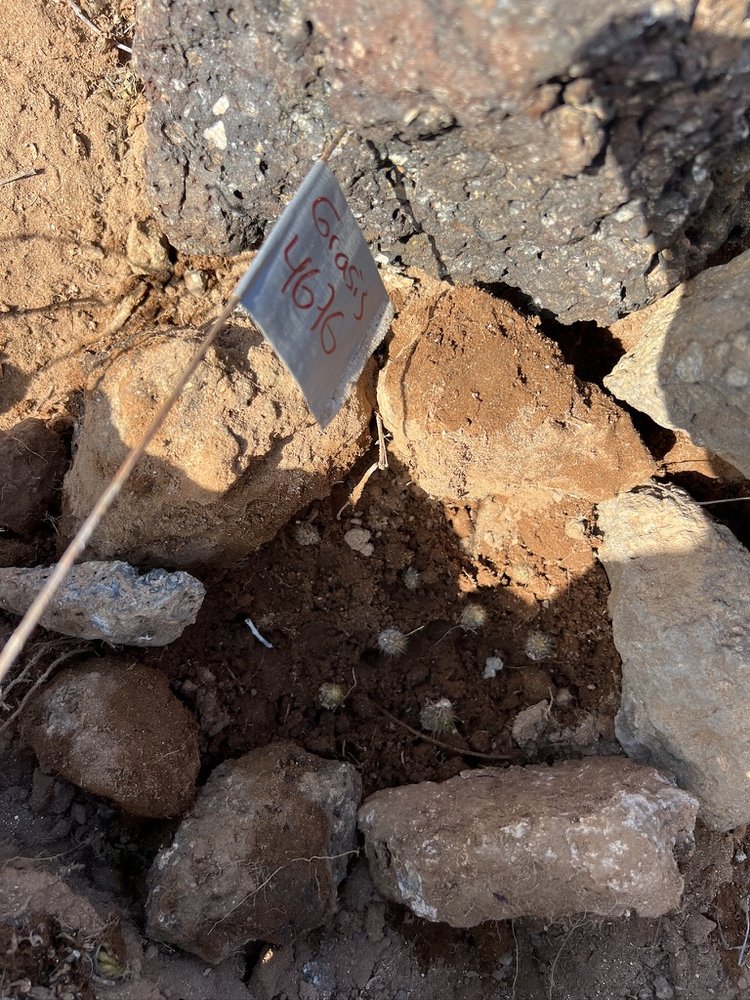
Learn more about this work in the Ecological Restoration Plan for Plaza Sur, developed together with the GNPD and CDF.
